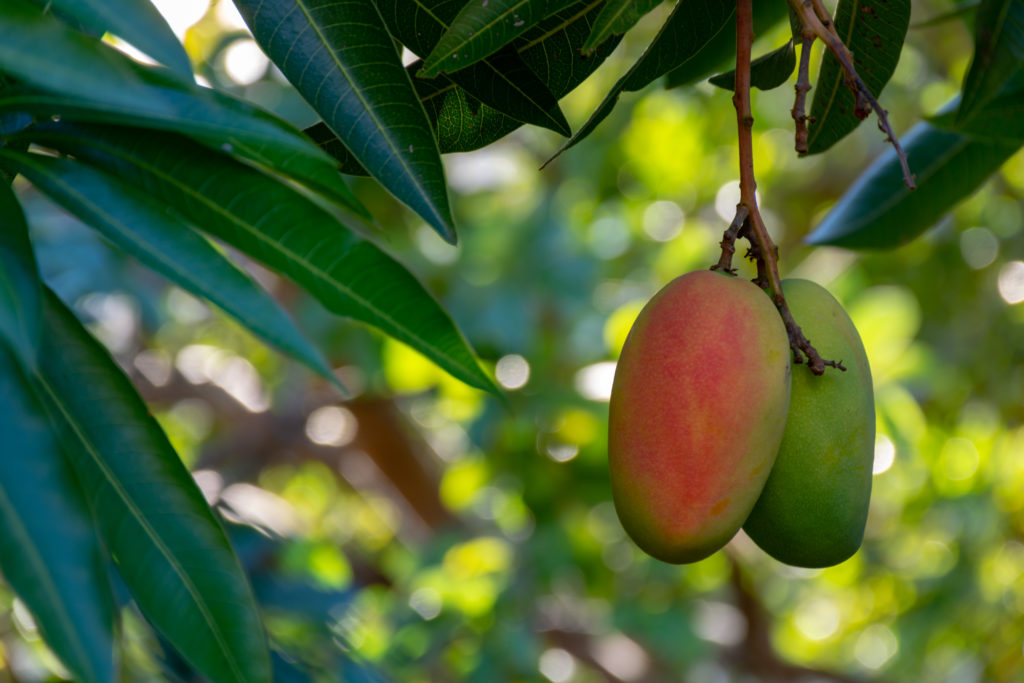
The mango tree is an excellent choice if you have space and live in subtropical or tropical areas of the country. These plants do very well in places like South Florida, where temperatures rarely dip below 40. There are many different species of mangos all originating in India. Mango trees first arrived in Florida in the early 1800s. Since then, they have been a favorite of gardeners for their beautiful green canopies and sweet fruit. These trees produce delicious fruit in about 4 to 5 years after the sapling is planted in the ground. It is possible to grow dwarf varieties, such as the ‘Carrie’ variety, in pots outside, but these plants will not do well as an indoor plant.
Plant the mango tree in the landscape in zones 9b and above. The ideal time to plant the mango tree is in early spring, before the tree experiences a flush of growth. Water the tree until it is established. Afterward, provide them with a drink as needed, especially in the heat of the summer. Fertilize with a nitrogen-rich fertilizer after the tree bears fruit and then with a fertilizer rich in phosphorus and potassium as the tree goes into flower. These plants do well in neutral to acidic soil. Mango trees need well-drained soil; they do not do well in areas where their roots stay soaked for extended periods.
Note: Mango trees have sap that can be an irritant to people who are sensitive to poison ivy. Take care when handling the plant; wear gloves if necessary.
FAST FACTS
Outstanding Features: Large, green canopy, produces delicious fruit

Common Name
Mango tree

Bloom Colors
Small white flowers

Water
Moderately and consistently moist

Zone
10 and above

Fertilizer
Fertilizer formulated specifically for mango

Scientific Name
Mangifera indica

Light
Direct sun or some partial shade

Size
Varies depending on the variety

Overwintering
Does not overwinter well in pots

Companion Plants
Flax lily, Aztec grass, Podocarpus